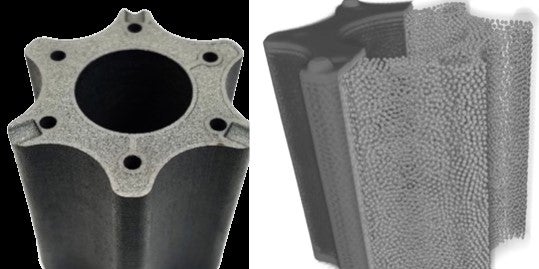
Dr. Brian Jaques and Allyssa Bateman recently received a Nuclear Energy University Program Research & Development award in collaboration with the University of Texas at San Antonio (UTSA) Departments of Physics and Astronomy and Computer Science, and the Kleberg Advanced Microscopy Center (KAMC). The two-year project, titled Targeted Materials Characterization and Testing of Additively Manufactured Metals and Ceramics to Inform Print/Build Data Analytics, is part of the Transformational Challenge Reactor (TCR) program, which aims to widely adapt AM technologies into nuclear energy technologies. Researchers will test additively-manufactured metals (316L, Alloy 718) and ceramics (silicon carbide) to help predict their performance when deployed in the extreme conditions of a nuclear reactor.
Boise State will characterize mechanical properties and microstructure of printed parts while tracking specific sample segments relative to print parameters and print orientation, giving us insight into how parameters change through a printed part. UTSA will use similar specimens to perform high temperature steam oxidation testing characteristic of steam ingress from a depressurized loss of coolant accident in either a light water reactor (LWR) or an advanced gas reactor (AGR) within a steam secondary cycle. Once the data is collected, vigorous data analytics will be completed (at UTSA) to correlate the properties as a result of the AM process, which is essential to the materials qualification necessary for reactor structural materials.
Elizabeth Sooby, a collaborator from UTSA states that this project “advances clean energy technology, particularly incorporating data science and advanced manufacturing techniques, (and) places us on the leading edge of advancements in this area, all while engaging our undergraduate and graduate students in cutting-edge research. It’s going to be very hands-on, and student engagement in research is one of the things we’ve identified as a key player in STEM student success, especially at the undergraduate level.”